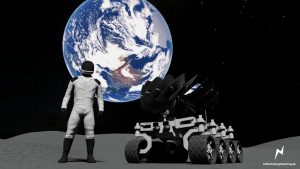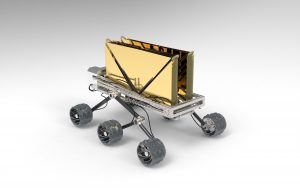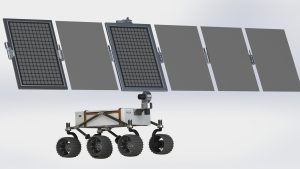The NASA Lunar Torch Design Challenge has come to a close and we are excited to announce the winners! The panel of judges for this competition were NASA engineers and employees with extensive knowledge in the field. The challenge was left open to the minds of the competitors, with certain requirements set out by our NASA judges.
Comments from the Judges
I would really like to thank the GrabCAD community on the stunning submissions in the Lunar Torch heliostat design challenge.
The judges had an extremely difficult time selecting the entries and then ranking the winners.
In the first round of the challenge, the judges were asked to pick their top 15 selections. Surprisingly, 42 out of the 60 submissions were selected by at least one judge. This wide range of selections is a testament to the amazing work that the GrabCAD community engineers displayed in this competition.
Due to the wide array of selections, we changed our criteria so that designs with two votes would be in the running for the final prizes. Then we scored these entries using the selection criteria listed below:
- Operational feasibility of providing solar energy where commanded (0-25 points)
- Feasibility of operating in a lunar environment (0-20 Points)
- Feasibility of deploying from a packaged state (0 - 20 Points)
- Innovation (1 - 10 Points)
- Feasibility of manufacturing and fabrication (0 - 10 Points)
- Quality and fidelity of the 3D models (0 - 15 Points)
This allowed us to rank the submissions and get to a point where we could discuss the merits and shortcomings of each one. I can honestly say all the judges were very impressed with the quality of the entries. We were humbled by the incredible amount of effort that the GrabCAD community put into these submissions and wish we could have awarded many more with prize money.
Finalists
The winners each received cash prizes, the amounts are below:
- First Place: $3,000
- Second Place: $2,000
- Third Place: $1,000
- Fourth Place: $750
- Fifth Place: $250
Below, you will find the winning models:
First Place: vulkano.engineering-1

Second Place: Ben Cann

Third Place: Giolu Cristian

Fourth Place: Anouar Barodi

Fifth Place: Yohannes Solomon

What’s Next
With all of the innovative concepts received, NASA will be pushing the idea of a mobile lunar heliostat to the teams developing the Artemis base camp. Kevin will also be promoting some of the concepts at the Lunar Surface Innovation Consortium. In addition, this will give NASA a lot of material for submitting an Internal Research and Development (IRAD) proposal to develop a test article.
Finally, remember that heliostats have many potential uses here on Earth. The designs the winners developed could lead to a commercial product if they want to pursue that in the future.
Stratasys and NASA would like to thank each designer for their submissions and dedication to the competition.
Congratulations to everyone on an exceptional competition.
Sincerely,
Design Competition Committee







